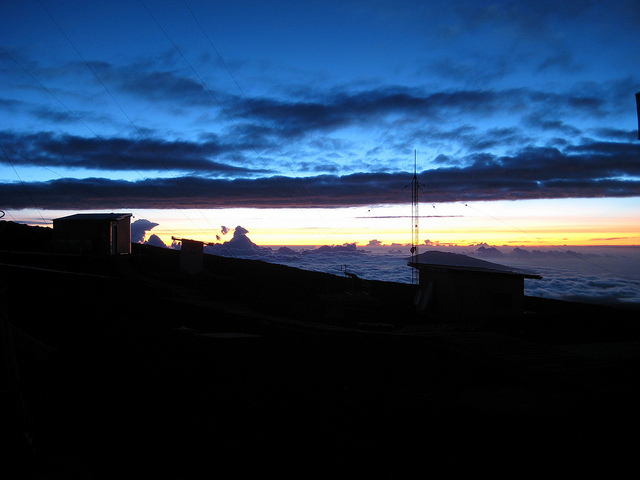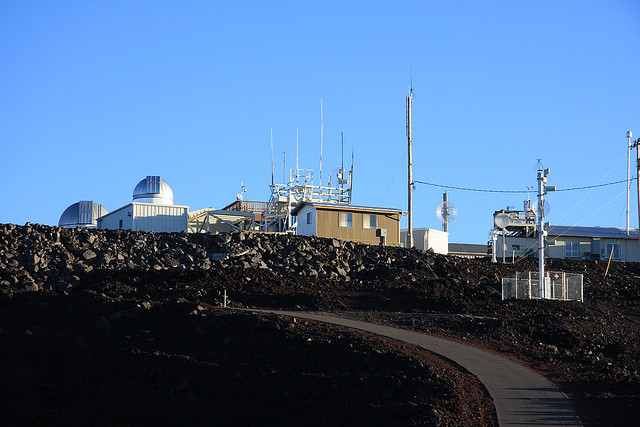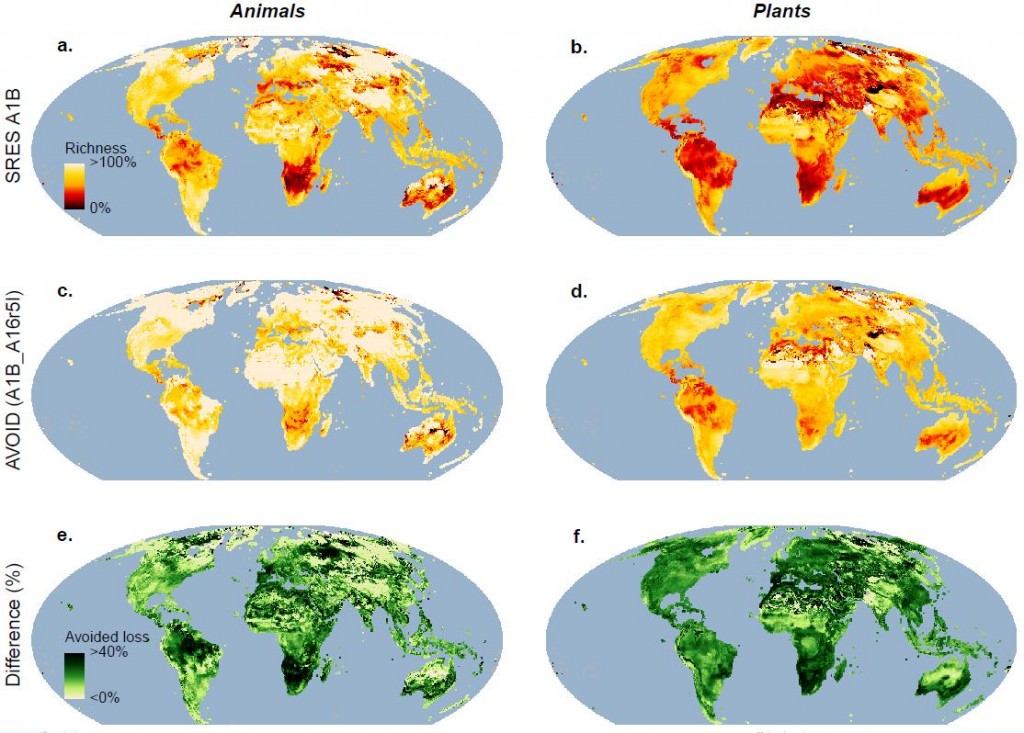Search Results for Tag: global warming
Unicef: Children will be hit hardest by climate change

Unicef says children have been left out of the climate change debate (Photo: CC BY-SA 2.0 by Dhilung Kirat/flickr.com)
As leading scientists gather in Stockholm to produce a detailed review of our knowledge of climate change so far, a new study released this week says that rising global temperatures pose the biggest risks to children.
Children’s charity Unicef says health problems, a relative lack of resources, vulnerability to disease, malnutrition and migration make children especially vulnerable to climate change. Despite that, the group says, children have largely been left out of the debate so far.
“We are hurtling towards a future where the gains being made for the world’s children are threatened and their health, wellbeing, livelihoods and survival are compromised … despite being the least responsible for the causes,” David Bull, Unicef’s UK executive director, said “We need to listen to them.”
In the paper, the group warns that changing weather in the form of an increase in droughts, floods, heatwaves and storms are among the most pressing concerns facing the young.
“The legacy of climate change is no longer a distant projection, but will be felt by children born this year and beyond. A child born in 2013 will be 17 in 2030 and 37 in 2050, when the worst impacts of climate change will begin to be felt,” the charity says.
Today, 700 million children live in the ten countries most vulnerable to climate change, and it’s estimated that 25 million more children will be malnourished as a result of climate change by 2050.
Meanwhile, the Intergovernmental Panel on Climate Change (IPCC) meeting in Stockholm is expected to warn that climate change is almost certainly caused by human actions. Scientists are expected to say it will lead to a global temperature rise likely to top 2C, with related effects including the shrinking of the Arctic ice cap and glaciers, a rise in sea level by nearly 1 meter by the end of this century and more extreme rainfall in parts of the globe.
Coral collapse considered evitable
Normally, we mostly present you animals threatened by climate change – but this time, we have some good news for you: Researchers recently found out that there is a way corals might actually survive the multiple threats of humanity. We actually give these small creatures a very hard live: pollution, overfishing and last but not least climate change. The latter influences the reefs by ocean acidification and rising sea temperatures.
For a long time it was thought that those cnidaria folks won’t cope with those impact. But the new study gives a glimpse of hope: If we manage to lower CO2 emission under the current level and stop overfishing, then all reefs with more than 20 per cent coral cover will survive. That’s the only chance, the researchers figured out.
For their work they took into account models for climate change, ecosystem dynamics, and carbonate processes. That way they could show that fish colonies are crucial for corals to survive, as they eat away straggling algae on the reefs resulting in more space for corals to grow.
Live like millions of years ago?

CO2 levels are measured on Mauna Loa volcano as the air is of very good (clear) quality up here (Photo: LCDR Eric Johnson, NOAA Corps)
You might not have realized it, but last Friday something quite historical happened: For the first time since the Pliocene (about five to three million years ago) CO2 concentration in the atmosphere crossed the 400 parts-per-million limit. The last time that much carbon dioxide was in the atmosphere, the Arctic was ice-free, the Sahara desert was a savanna and the sea level was 40 meters above today’s level.

NOAA’s observatories on dead Mauna Loa volcano, Hawaii, where atmospheric CO2 levels are monitored (CC BY SA 2.0: sharloch)
Measuring this carbon level is kind of a family business: More than 50 years ago, Charles Keeling started measurements on the dead Mauna Loa volcano, where air quality is very good. Back then, in 1958, CO2 concentration was around 315 ppm – compared to 280 ppm on preindustrial level. Today, his son Ralph Keeling continues the measurements.
The overall trend is increasing, though CO2 levels fluctuate periodically from winter to summer season, when plants naturally fix more carbon dioxide due to leaf growth. Scientists attribute this overall increase to anthropogenic CO2 emissions – mainly from burning fossil fuels.
Within the last ten years, CO2 concentration has risen by two ppm per year. If the world continues emitting carbon at this pace, the next important threshold is not far away (german link). CO2 concentration may not rise upon 445 ppm CO2 (445 molecules of carbon dioxide in one million molecules) if the two degree target is to be met, scientists of the Intergovernmental Panel on Climate Change (IPCC) say.
Watch biodiversity declining
Species will have to move closer together by 2080: both, plants and animals, have to expect dramatical habitat loss due to climate change. If you follow our weekly series on Facebook, where we present animals threatened by climate change every friday, you are likely to know that habitat loss is a common reason for species to go extinct.
Now researchers have quantified this threat of biodiversity: Living spaces will be halved, scientists say, for more than fifty percent of all plants and a third of all animals. For their study they evaluated the fate of 48,786 common animal and plant species across the globe under different global-warming-scenarios.
“While there has been much research on the effect of climate change on rare and endangered species, little has been known about how an increase in global temperature will affect more common species”, says Rachel Warren, lead author of the study, in a press release. “This broader issue of potential range loss in widespread species is a serious concern as even small declines in these species can significantly disrupt ecosystems.”

Species richness in 2080: The geographic ranges of common plants and animals will shrink globally and thus species richness will decline almost everywhere. The top two maps show how species richness declines without mitigation, with the red areas showing the greatest declines. Plants, reptiles and particularly amphibians are expected to be at highest risk. Sub-Saharan Africa, Central America, Amazonia and Australia would lose the most species of plants and animals. The lower four maps show how the declines can be reduced by mitigation. (Credit: Nature Climate Change)
The scientists predicted the species loss with help of computer simulations and climate models – taking different warming scenarios into account. So they also came up with some rather good news: Acting quickly to slow climate change could avoid by 60 per cent of projected losses and give species an additional 40 years to adapt.
If rich biodiversity alone doesn’t serve as an argument for humans to promote mitigation, Warren points out the impact of biodiversity loss on mankind: “There will also be a knock-on effect for humans because these species are important for things like water and air purification, flood control, nutrient cycling, and eco-tourism.”
Exploring the North – Looking South: On a bottle of wine and into the ocean
But the Arctic isn’t the only place that’s important for the planet. Just on the other side of the planet, there’s another precious region: Antarctica. Why? Antarctic glaciologist Kenichi Matusuoka from the Norwegian Polar Institute explains this with the help of a bottle of wine.
Imagine holding a bottle of wine. The wine inside the bottle is very precious (and expensive), compared to the rest of the bottle – the glass body and the bottle cork. The wine corresponds to the ice in Antarctica: It is important for the planet as its melting could lead to a rise of 45 meters in sea levels.
Now imagine you turn the bottle upside down – the previously unimportant cork now becomes quite important as otherwise the precious wine would pour out. You can well imagine that the cork is now crucial, whether or not it’s a crumbly old cork that is only plugged loosely in the bottle neck, if you want to find out whether the wine will pour out or not.
That is why scientists focus on investigating the properties and melting behaviour of ice shelves, which is what the cork corresponds to. To be correct: Antarctica does not only have one “cork” like a bottle has, but several – those on top behave differently. But the overall research question is, whether climate change weakens the corks/iceshelves so intensely that they cannot withstand the pressure of the wine/Antarctic ice and finally might let it pass.

Antarctica from space: Blue-pinkish coloured are the ice shelf regions, where ice flows quicker than on land-grounded ice (Photo credit: NASA/JPL-Caltech/UCI)
During my travels in the Arctic region, I actually met a researcher who worked on the dynamics of Antarctica’s ice shelves. Tore Hattermann investigated the melting of a certain ice shelf underside. To get back to the cork analogy, you can imagine that it is rather crucial what size the cork has. If it’s too slim, the wine behind can easily push it away.
In West Antarctica, for example, a change in ocean circulation leads to warmer water below the ice shelves that starts to melt, contributing to more than two thirds of Antarctica’s mass loss. Now, computer simulations predicting that those circulations also transport warm water below the Fimbul ice shelf suggest additional melting. The Fimbul ice shelf is located not in the West, but in the East and has similar geographic conditions as the melting Western shelves have.

Tore Hattermann working on Antarctic ground – attentively observed by a penguin (Photo: Johan Hustadnes)
So, together with other scientists, Tore went on an Antarctica expedition to see whether the simulations are correct and if they could really find warmer water underneath the Fimbul ice shelf. Using boiling water, they drilled holes through 400 meters of ice and passed oceanographic instruments into the ocean below. Over two years those instruments measured water properties: its flow velocity, temperature, salinity and oxygen content. After analyzing the data collection, Tore could prove that the computer simulation was wrong: There was not that much warm water circulating under the Fimbul ice shelf, therefore it wasn’t melting at the extent predicted.
For most people this might seem a disappointment, but for scientists this is rather routine: proving models (wrong). In order to improve or adjust the models in the next step, therefore they depict reality better and predict Antarctic ice shelf melting correctly.

I did not want to deny you this drawing, as sometimes pictures say more than words. That’s this issue explained in a(n abstract) picture. Savvy?
Watch out for the next issue to find out, what the expedition to Antarctica was like for Tore.











Feedback